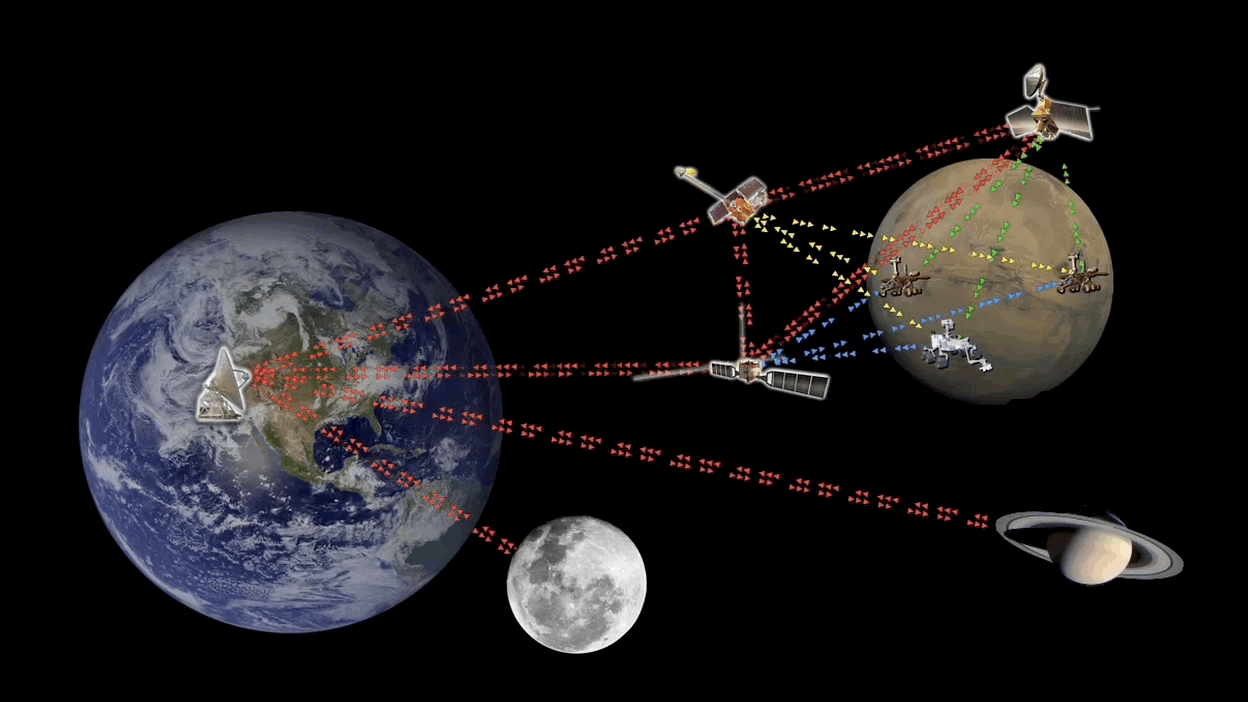You’ve done it. After years of effort and training, sacrifice, and pain, you become an astronaut and have finally set foot on Mars. Time to post your triumph on TikTok for that sweet social media cred. If only you can get a signal.
While that might seem like a silly scenario, the need for internet connectivity on Mars is real. It’s not just a matter of allowing astronauts to doomscroll and post on Reddit. Landing humans on Mars will require a tremendous amount of data transfer with Earth, which is not easy. So how can we create an information network on Mars that is robust enough for both logistic and personal needs? A paper posted on the arxiv proposes an idea.
The idea for an interplanetary internet isn’t new. Astronauts on the International Space Station already have web access, though they often complain about its dialup-level speeds. And Internet pioneers such as Vint Cerf have proposed protocols that would allow communication between planets. But the devil, as they say, is in the details, which is where this latest paper comes in.
There are two main challenges in providing Internet connectivity to Mars. The first is simply bandwidth. You can’t lay fiber from Earth to Mars. You have to transfer data back and forth by radio. At present, our communication to Martian satellites and rovers is done by the Deep Sky Network (DSN), which is a collection of large radio antennas across the globe. But the DSN is already being pushed to its limit, and we haven’t even had a crewed mission to Mars. Meeting the demands for data in the future is going to require new ideas.

One of these ideas, as the paper outlines, is edge computing. Although you probably don’t notice it, edge computing is why you can watch streaming services like Netflix and Disney+. It takes a tremendous amount of bandwidth to stream television and movies, so streaming services distribute their servers to get you better speeds. When you check out the latest Marvel series, Disney+ doesn’t send you the data from Orlando, Florida, but rather a local server closer to your home. This means that you don’t have to wait long for the latest IA-generated opening credits. It also means that the load is distributed across servers, so no individual one gets overloaded.
This latest work looks at what it would take to have an edge computing network around Mars. The key is not only to have data locally accessible, but also to have a certain level of redundancy. So they propose building a constellation of satellites around Mars. Their system would have 9 satellites each in 9 orbital planes, for a total of 81 satellites. As with many constellations, the satellites would communicate with each other to have redundant backups of data. This means various landing sites on Mars would be able to communicate with 2 or 3 satellites at any given time. For extended missions, ground-based servers could be used for even faster data retrieval.
Building such a system would not be cheap, so the authors propose building the constellation in stages. As exploratory missions to Mars lay the groundwork for crewed landing, a few constellation satellites could go along for the ride. By the time long-term stations are being built, the constellation could already be in place.
So who knows, by the time you set foot on the red planet, the Internet might just be ready for you.
Reference: Pfandzelter, Tobias, and David Bermbach. “Can Orbital Servers Provide Mars-Wide Edge Computing?” arXiv preprint arXiv:2306.09756 (2023).

